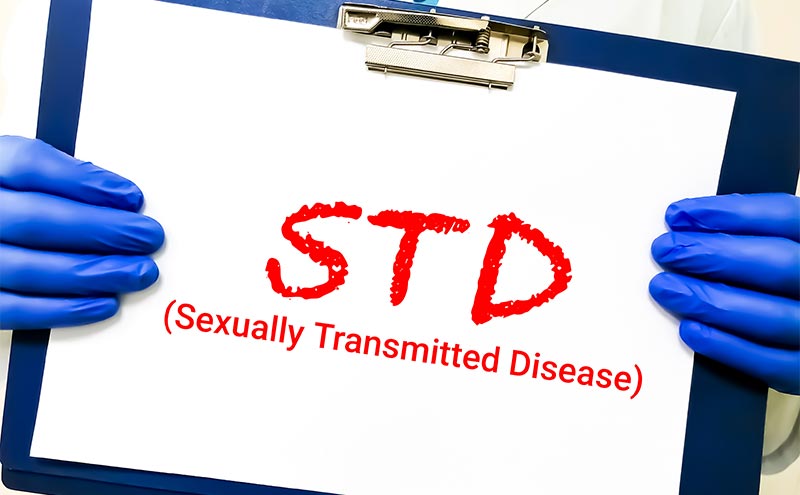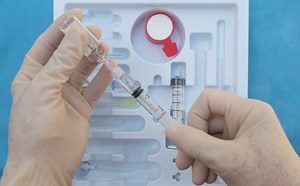
Let’s Talk About Sex
As an adolescent and pediatric emergency medicine specialist with an interest in reproductive health, I was asked to write about adolescents and sexually transmitted diseases (STDs). So, I’ve put together a potpourri of important, but not as commonly discussed, issues to help improve adolescents’ and your lives, with two caveats. 1) These are NOT recommendations for sexual assault or child abuse cases. 2) There are apps and websites at the end of this article for further information. These tidbits are more for what to think about when caring for an adolescent who might be sexually active… AKA every adolescent.
Background
Feel free to skip this section, if you agree. Of the 145.6 million ED visits a year, 14% were among 15–24 year olds (1), and these adolescents and young adults (AYA) are having sex.
In the 2017 Youth Risk Behavior Survey (YRBS), 57% of 12th graders and 40% of all high school students reported ever having sex (2). The prevalence is likely higher as the YRBS cohort are teens actually attending school. Half of all STDs (1 in 5 new HIV infections and 3 in 5 chlamydia infections) are among AYA (3,4). And, although the pregnancy rate for 15–19 year olds (43 per 1,000 women) has been steadily declining, the US rate remains 3 to 5 times higher than in other developed countries (14 per 1,000 adolescents and 8 per 1,000 adolescents in the Netherlands and Switzerland, respectively) (5,6). These STD and pregnancy rates are higher among adolescents of color and those who live in the south and southeast. As EM physicians, we need to be cognizant of the fact that sexually active adolescents utilize the ED, not always with STD-related complaints. We should be screening high-risk asymptomatic adolescents and testing symptomatic adolescents.
Ask because they might not tell, but then what?
First and foremost, if you don’t ask, adolescents are unlikely to tell you about sexual activity, especially if their parents/guardians are present. The American Academy of Pediatrics (AAP) and the Society for Adolescent Health and Medicine (SAHM) recommend time alone with adolescents to provide confidential screening and addressing of risks, promote healthy behaviors, and answer questions (7,8). But, it is not as simple as 1) kick the parents out, 2) promise that NO ONE will find out what is discussed, 3) send off whatever tests you deem appropriate. A national study of sexually experienced 15 to 17 year olds found that 22.6% of the teens would not seek out reproductive health services due to concern that their parents might find out (9).
All 50 states and the District of Columbia allow minors to consent to STD services; 11 states have age restrictions. Eighteen states allow physicians to inform parents that a minor is receiving STD services, not necessarily the results of testing. Only Iowa requires physicians to inform a minor’s parent of a positive HIV diagnosis (10). When testing for STDs, including HIV, it is important to inform adolescents that confidentiality may not be guaranteed. Providers should be informed about local laws and institution/insurance specific policies regarding parental notification in cases of STD testing and treatment.
Personally, I believe what works best is reassuring the parent/guardian that they are not the enemy. There are no secrets about the topics covered during the private conversation between you and the patient. You are asking about sex, drugs, and mental health issues. I also add the limits to confidentiality, namely suicidality, homicidality, abuse. As a doctor, you hope that the parent(s) are talking about these issues with their teen at home. For now, in the ED, you are the teenager’s doctor, and you want to ensure that the teen is as forthright as possible, so you can treat them appropriately. I always let the patient and family know PRIOR to the family leaving the room, that I test ALL my reproductive-aged female patients for pregnancy.
While speaking to the teen alone, I ask the teenager if their parent/guardian is aware of their sexual activity and if I can speak with their parents about any sexual health related work up/concerns. Many times I am pleasantly surprised with a “yes, they know.” I don’t order tests without their knowledge or consent. I never promise that parents won’t find out information given the limitations on electronic health records, patient portals, after-visit summaries, and insurances’ explanation of benefits. Therefore, I ask them if there is a breach in confidentiality, how they would feel about it and determine how to proceed.
Pelvic Exam: Does she NEED it?
One in 5 women report completed or attempted rape in their lifetime. Of these women who were raped, 1 in 8 were younger than 10 years old and 1 in 3 were 11 to 17 years old (11). It is essential to obtain abuse/assault history, though many patients may not disclose trauma history. Trauma-informed care acknowledges these high rates of sexual violence with the goal of providing care in the ED that does not retraumatize the survivor. This brings into question: Are pelvic exams useful? Are they necessary given the high sensitivity and specificity of STD and pregnancy testing with the availability of ultrasound?
A study of adult ED providers performing bimanual exams to assess cervical motion tenderness and uterine and adnexal tenderness/mass showed poor interrater reliability of exam findings (12). Another study from a pediatric ED showed that results of the pelvic exam (external genital visual inspection, a speculum examination, and bimanual examination) did not change the diagnosis of PID/cervicitis (13). Another study showed that uncomplicated GU infections (BV, Trich and candida, GC/CH) were diagnosed with greater sensitivity and specificity without a speculum exam than with a speculum exam (14). Lastly, the pelvic exam in the ED may be the first in the patient’s life, performed by an attending or trainee in the ED, and unlikely to be of the same comfort level (for the physician AND the patient) as one done by the patient’s primary care provider, adolescent medicine specialist, or gynecologist (15).
When evaluating a patient for possible STD or pregnancy, a bimanual exam and/or the speculum exam is unlikely to be helpful when lab testing and ultrasound are available. But in cases where vaginitis testing is unavailable or there is a concern for skin lesions, an external exam may be appropriate. In cases of concern for vaginal/cervical trauma or foreign body, a speculum exam may be warranted.
Testing: Don’t forget extragenital sites
Ask about oral and anal sex, and test each site, if indicated. In 2019, the FDA cleared two GC/CT Nucleic Acid Amplification Tests (NAATs) for extragenital testing (16). In an urban PED study, only 20% of adolescents presenting with possible oropharyngeal or anorectal STIs had documentation reflecting STI consideration, of which only 5% were tested. Of those tested, two-thirds of them were not tested at the correct site, and of the one-third who did receive testing at the correct site, only half were the correct NAAT test (17). We must do a better job about asking about sexual practices, collecting the correct specimen source, and sending the correct test.
Testing: Self-collected vaginal swabs, preferred by patients and clinicians alike!
When possible, send self-collected vaginal swabs as they have the same sensitivity and specificity as cervical swabs and better sensitivity than urine. A first catch urine specimen is acceptable but may detect up to 10% fewer infections when compared with vaginal and endocervical swab samples (18).
Health disparities
Black, Native Hawaiian/Other Pacific Islander, and Hispanic adolescents have higher rates of STDs and pregnancy compared to Whites (19,20). These disparities are a reflection of multiple and intersectional realities for our patients of color due to societal and systemic racism. Lack of access to healthcare and quality education, lower socioeconomic status, mistrust in the healthcare system, higher incarceration rates are among some of the issues our patients of color face. A study from a large urban PED found that only 11% of high risk adolescents had sexual history documented and only 2.6% had STD testing (21). Another study of 14–18 years old evaluated at 49 children’s hospitals found that only 11% had STD testing performed (22). Despite the higher rates of STDs and pregnancy, especially among adolescents of color, ED providers are not asking about sexual history and not sending STD tests. We should be taking a sexual history from the great majority, if not all of our adolescent patients, regardless of sex, gender, ability, sexual orientation, race, ethnicity, etc.
HIV Pre-Exposure Prophylaxis, Consider It
In 2017, 21% of new HIV infections were of adolescents and young adults (AYA) aged 13 to 24, of which the great majority (87%) were young men. In addition, there are estimates that there are >40% undiagnosed HIV infections among AYA (3). Male-to-male sexual contact is the most common mode of transmission for males and heterosexual sexual contact for females. The CDC recommends opt-out HIV testing at least once a year starting at 13 years old in “all healthcare settings” (23). For adolescents at high-risk for HIV transmission, HIV pre-exposure prophylaxis (PrEP) should be offered. Emtricitabine/tenofovir (Truvada) is FDA approved for adolescents who weigh at least 35 kg. A recent State-of-the-Art review in the journal, Pediatrics, as well as the Society for Adolescent Health and Medicine recommend PrEP, but recent studies show that less than 10% of HIV PrEP prescriptions are for AYA (24) (25).
Protective factors: Focus on the positive
Research shows that promoting protective factors improves adolescent sexual health outcomes and decreases risky behaviors (26–29). Protective factors such as adolescent connectedness with adults and schools, open communication with parents, and belief in the future help adolescents make healthy decisions. As physicians, we can focus on the positives as well when treating adolescents: “That’s great that you are taking care of yourself by using condoms. Have you talked with your regular doctor about birth control? Do you want a prescription today? Or a referral to the Adolescent Clinic?” “I’m glad you are able to talk to your parents about your relationship with your girlfriend. Have you thought about talking to them about sex?” “That’s great that you are graduating next week. Think about birth control if you don’t want to get pregnant before heading off to college.”
Take home points:
- Ask adolescents about their sexual history in private.
- Reconsider the need for a pelvic exam (+/- external, bimanual, speculum exam).
- If possible, send self-collected vaginal swabs.
- Send oral and rectal NAAT testing, if applicable.
- Be informed about HIV PrEP resources for high-risk patients.
- Stay positive
Resources
- Sexually Transmitted Disease (STD) treatment guide for apple and android devices.
https://www.cdc.gov/std/treatment-guidelines/default.htm - Review article in emDocs on the utility of the pelvic exam.
http://www.emdocs.net/speculations-on-the-speculum-is-a-pelvic-exam-ever-needed-in-the-ed/ - UCSF’s Clinical Consultation Center: Up-to-date clinical consultation for HIV PrEP decision-making.
https://nccc.ucsf.edu/clinical-resources/prep-guidelines-and-resources/
Call: Mon-Fri, 9AM-8PM (EST). (855) 448-7737 or (855) HIV-PrEP - CDC Division of Adolescent and School Health (DASH): Resources for parents to enhance protective factors known to reduce or avoid risky sexual health behaviors.
https://www.cdc.gov/healthyyouth/protective/index.htm
References
- Rui P, Kang K, Ashman J. National Hospital Ambulatory Medical Care Survey: 2016 Emergency Department Summary Tables. 2016;38.
- Kann L, McManus T, Harris WA, Shanklin SL, Flint KH, Queen B, et al. Youth Risk Behavior Surveillance – United States, 2017. Morb Mortal Wkly Rep Surveill Summ Wash DC 2002. 2018 15;67(8):1–114.
- HIV Surveillance Report 2017; vol. 29 [Internet]. Centers for Disease Control and Prevention; 2018 [cited 2020 Feb 19]. Available from: http://www.cdc.gov/hiv/library/reports/hiv-surveillance.html.
- Satterwhite CL, Torrone E, Meites E, Dunne EF, Mahajan R, Ocfemia MCB, et al. Sexually transmitted infections among US women and men: prevalence and incidence estimates, 2008. Sex Transm Dis. 2013 Mar;40(3):187–93.
- Kost K, Maddow-Zimet I, Arpaia A. Pregnancies, Births and Abortions Among Adolescents and Young Women In the United States, 2013: National and State Trends by Age, Race and Ethnicity. :71.
- Sedgh G, Finer LB, Bankole A, Eilers MA, Singh S. Adolescent Pregnancy, Birth, and Abortion Rates Across Countries: Levels and Recent Trends. J Adolesc Health Off Publ Soc Adolesc Med. 2015 Feb;56(2):223–30.
- Breuner CC, Mattson G. Sexuality Education for Children and Adolescents. Pediatrics [Internet]. 2016 Aug 1 [cited 2020 Feb 24];138(2). Available from: https://pediatrics-aappublications-org.proxy.library.emory.edu/content/138/2/e20161348
- Ford C, English A, Sigman G. Confidential health care for adolescents: position paper of the Society for Adolescent Medicine. J Adolesc Health. 2004 Aug;35(2):160–7.
- Leichliter JS. Confidentiality Issues and Use of Sexually Transmitted Disease Services Among Sexually Experienced Persons Aged 15–25 Years — United States, 2013–2015. MMWR Morb Mortal Wkly Rep [Internet]. 2017 [cited 2020 Feb 20];66. Available from: https://www.facebook.com/CDCMMWR
- Minor’s access to STI services [Internet]. Guttmacher Institute; 2019 Mar [cited 2019 Mar 1]. Available from: https://www.guttmacher.org/state-policy/explore/minors-access-sti-services
- Smith S, Zhang X, Basile K, Merrick M, Wang J, Kresnow M, et al. The National Intimate Partner and Sexual Violence Survey: 2015 Data Brief — Updated Release. Atlanta, GA: National Center for Injury Prevention and Control, Centers for Disease Control and Prevention; 2018 p. 32.
- Close RJ, Sachs CJ, Dyne PL. Reliability of bimanual pelvic examinations performed in emergency departments. West J Med. 2001 Oct;175(4):240–4; discussion 244-245.
- Farrukh S, Sivitz AB, Onogul B, Patel K, Tejani C. The Additive Value of Pelvic Examinations to History in Predicting Sexually Transmitted Infections for Young Female Patients With Suspected Cervicitis or Pelvic Inflammatory Disease. Ann Emerg Med. 2018 Dec 1;72(6):703-712.e1.
- Blake DR, Duggan A, Quinn T, Zenilman J, Joffe A. Evaluation of Vaginal Infections in Adolescent Women: Can It Be Done Without a Speculum? Pediatrics. 1998 Oct 1;102(4):939–44.
- Bryan AF, Chor J. Factors Influencing Adolescent and Young Adults’ First Pelvic Examination Experiences: A Qualitative Study. J Pediatr Adolesc Gynecol. 2019 Jun;32(3):278–83.
- FDA clears first diagnostic tests for extragenital testing for chlamydia and gonorrhea [Internet]. FDA. 2019 [cited 2020 Feb 20]. Available from: http://www.fda.gov/news-events/press-announcements/fda-clears-first-diagnostic-tests-extragenital-testing-chlamydia-and-gonorrhea
- Gallagher C, Lee SS, Shofer FS, Mollen CJ, Goyal MK, Dowshen NL. Pediatric Emergency Provider Sexually Transmitted Infection Screening Practices in Adolescents With Oropharyngeal or Anorectal Chief Complaints: Pediatr Emerg Care. 2018 Feb;1.
- Recommendations for the Laboratory-Based Detection of Chlamydia trachomatis and Neisseria gonorrhoeae — 2014 [Internet]. [cited 2020 Feb 20]. Available from: https://www.cdc.gov/mmwr/preview/mmwrhtml/rr6302a1.htm
- STDs in Racial and Ethnic Minorities – 2018 Sexually Transmitted Diseases Surveillance [Internet]. 2019 [cited 2020 Feb 17]. Available from: https://www.cdc.gov/std/stats18/minorities.htm
- About Teen Pregnancy | CDC [Internet]. 2019 [cited 2020 Feb 26]. Available from: https://www.cdc.gov/teenpregnancy/about/index.htm
- Weisman J, Chase A, Badolato GM, Teach SJ, Trent ME, Chamberlain JM, et al. Adolescent Sexual Behavior and Emergency Department Use. Pediatr Emerg Care [Internet]. 2018 Mar 28 [cited 2020 Feb 19]; Available from: https://www.ncbi.nlm.nih.gov/pmc/articles/PMC6162186/
- Masonbrink AR, Richardson T, McCulloh RJ, Hall M, Bettenhausen JL, Walker JM, et al. Sexually Transmitted Infection Testing in Adolescents: Current Practices in the Hospital Setting. J Adolesc Health Off Publ Soc Adolesc Med. 2018 Sep;63(3):342–7.
- Revised Recommendations for HIV Testing of Adults, Adolescents, and Pregnant Women in Health-Care Settings [Internet]. [cited 2020 Feb 24]. Available from: https://www.cdc.gov/mmwr/preview/mmwrhtml/rr5514a1.htm
- Hosek S, Henry-Reid L. PrEP and Adolescents: The Role of Providers in Ending the AIDS Epidemic. Pediatrics [Internet]. 2020 Jan 1 [cited 2020 Feb 21];145(1). Available from: https://pediatrics-aappublications-org.proxy.library.emory.edu/content/145/1/e20191743
- HIV Pre-Exposure Prophylaxis Medication for Adolescents and Young Adults: A Position Paper of the Society for Adolescent Health and Medicine. J Adolesc Health. 2018 Oct;63(4):513–6.
- Mon Kyaw Soe N, Bird Y, Schwandt M, Moraros J. STI Health Disparities: A Systematic Review and Meta-Analysis of the Effectiveness of Preventive Interventions in Educational Settings. Int J Environ Res Public Health. 2018 11;15(12).
- Sieving RE, McRee A-L, McMorris BJ, Shlafer RJ, Gower AL, Kapa HM, et al. Youth-Adult Connectedness: A Key Protective Factor for Adolescent Health. Am J Prev Med. 2017 Mar;52(3 Suppl 3):S275–8.
- Protective Factors | Adolescent & School Health | CDC [Internet]. 2019 [cited 2020 Feb 26]. Available from: https://www.cdc.gov/healthyyouth/protective/index.htm
- Steiner RJ, Sheremenko G, Lesesne C, Dittus PJ, Sieving RE, Ethier KA. Adolescent Connectedness and Adult Health Outcomes. Pediatrics [Internet]. 2019 Jul 1 [cited 2020 Feb 26];144(1). Available from: https://pediatrics.aappublications.org/content/144/1/e20183766
Atsuko Koyama, MD, MPH




